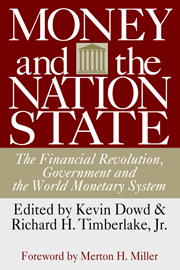| Formats |
Paperback |
eBook |
| Formats |
Paperback |
eBook |
Overview
Vietnam is credited with having one of the “most successful antipoverty campaigns ever undertaken anywhere, raising up about two-thirds of those who lived in poverty two decades ago, by combating both the anti-productive aspects of tradition and the needless poverty still imposed to some degree by the dead economic hand of Ho Chi Minh and his followers.” A country that experienced chronic, centrally imposed food shortages for decades has radically changed course, greatly reduced the percentage of the population living in poverty, from over 70 percent in the mid-1980s to 14.7 percent in 2007. Except for China, Vietnam has had the fastest growing economy in all of Southeast Asia.
In Vietnam Rising, William Ratliff, one of the leading experts on the economics of Southeast Asian countries, examines the remarkable, pro-market, pro-entrepreneurial changes underway in Vietnam. Ratliff then reviews the cultural and historical experiences that provide the foundation for current pro-enterprise reforms, discusses the changes that followed “reunification” at the end of the Vietnam War, and the reforms that began twenty years ago. In the process, Vietnam Rising illuminates the hows and whys of entrepreneurial opportunities and the changes necessary to address the remaining traditional and institutional challenges for creating a truly open, market-based, entrepreneurial climate.
Contents
Preface
Introduction
Survey of Conditions in Vietnam to Mid-2008Part I. Background
1. The Confucian Soul of Vietnam
2. Modern History: France, War, and Communism
3. Doi Moi Renovation and Reform
4. Socialism: Nirvana or Not?Part II. Overview of Reforms Today
5. The Legal Jungle
6. The Educational Tangle
7. Monetary Policy and Banking Reform
8. Resurrecting the SOE DinosaursPart III. Entrepreneurship in Its Several Forms
9. Introducing Entrepreneurship
10. Enterprises in Vietnam: Legislation and Statistics
11. Private Enterprise in the Broader Business Picture
12. Businesses in VietnamPart IV. Special Challenges for Small and Medium-Sized Enterprises
13. Access to the People's Land
14. Funding and Credit, If You Can Get It
15. Walking Through a Business Registration
16. Vietnamese SurprisesPart V. Confronting the World
17. Vietnam–U.S. Relations
18. Joining the World Trade OrganizationPart VI. Conclusions and Observations
Appendix: A Note on International Involvement in Vietnam's Reforms
Notes
References
Index
About the Author
Detailed Summary
- Vietnam has emerged from poverty and isolation to become one of the fastest growing economies of Southeast Asia. Numerous economic and legal reforms have helped spur foreign investment and domestic entrepreneurship, resulting in an annual growth rate of 7.1 percent over the past decade. The percentage of the population living in poverty has fallen from over 70 percent in the mid-1980s to 14.7 percent in 2007. Vietnam's new status as an economic "tiger cub" is especially fascinating because Vietnam has little historical experience with the ideas and institutions of market-oriented and pro-entrepreneurship reforms.
- Even more than Buddhism and Taoism, Confucianism, introduced long ago by the Chinese, has greatly influenced Vietnamese beliefs, legal practices, and living conditions. Confucian values, for example, have shaped Vietnam's rigid bureaucracy and historically low esteem for entrepreneurs and merchants. Will these values pose significant obstacles for economic liberalization? Perhaps not. Many features of Confucianism have been successfully adapted to the modern world, transforming societies in ways that Confucius could not have imagined.
- Vietnam's Communist Party leaders insist their Doi Moi reforms are "renovating" their country but not dismantling socialism. You wouldn't know that by looking at the rapid growth of private enterprise: by December 2007, the private sector accounted for more than 60 percent of GDP. Production is led by small and medium-sized enterprises and household businesses. On average, more than 14,000 enterprises have been created every year since 2001.
- Vietnam's 1,900 state-owned enterprises (SOEs), a costly legacy from the days of Ho Chi Minh, provide about 70 percent of the country's tax revenue, half its exports, and more than a third of its GDP. They soak up 70 to 80 percent of its bank loans. Their earnings, however, are only 40 percent of GDP. A 2006 survey of 850 equitized SOEs showed that 85 percent had become economically successful—still a low percentage. By 2010 only 544 SOEs are scheduled to remain fully under government control in the fields of national security and public utilities.
- Doing business in Vietnam can be frustrating, but it is getting easier. The World Economic Forum's Global Competitiveness Report 2007–2008 ranked Vietnam's business environment 61 among 131 countries. A 2008 report by the World Bank ranked Vietnam 91 among 178 countries in ease of doing business (compared to 83 for China). It ranked Vietnam 97 in starting a business, 63 in dealing with licenses, 84 in employing workers, 38 in registering property, 48 in getting credit, 165 in protecting investors, 128 in paying taxes, 63 in trading across borders, 40 on enforcing contracts, and 121 on closing a business. Because the reform of Vietnam's legal system has lagged, many concerned parties prefer to avoid the legal system and instead resolve their disputes by negotiating with each other.
- Vietnam has come a long way, but it must continue to adopt liberal reforms if it is to realize its full potential and thereby bring hope for a better life to millions more citizens. In addition to liberalizing their flawed educational system, inefficient banking sector, and labyrinthine legal system (among other areas), the Vietnamese must make a conscious commitment to the values that support liberal reforms. Doing so will not be easy: Vietnam's communist legacy and some counterproductive aspects of its traditional culture often seem pervasive and entrenched. Nevertheless, the Vietnamese people show a strong desire to learn and to change.
Vietnam, a country once known for chronic food shortages, is on the rise. At the heart of its transformation are reforms that Vietnam Communist Party officials insist merely “renovate” the economy while maintaining a commitment to socialism. What exactly are the nature and extent of Vietnam’s reforms? How have the fundamental beliefs that underlie Vietnamese culture shaped its recent progress? Will Vietnam’s progress continue apace? Or will the economy backslide in the face of a global financial crisis or a political and cultural backlash?
In Vietnam Rising: Culture and Change in Asia’s Tiger Cub, East Asia historian William Ratliff (Research Fellow, The Independent Institute) examines the causes behind Vietnam’s dramatic transition; assesses its legal, educational, and economic reforms; and provides insights on the further changes that must occur for Vietnam to fulfill its potential as a dynamic, emerging economy.
“While for many years I have averaged about two months annually in China, I have also continued periodic trips to Vietnam, as an academic, journalist, and tourist,” writes Ratliff in the book’s preface. “Each time I visit the country I am more impressed by the spirit and dynamism of the people and by their determination to transform their lives and thus bring the long-embattled, stagnant, and repressed land into the modern world.”
Confucianism, Colonialism, and Communism
After briefly reviewing Vietnam’s political and economic conditions as of mid-2008, Ratliff examines the cultural and historical background of the government’s current reforms, showing their link to Confucian China, French colonial rule, and earlier programs of the Vietnam Communist Party.
Although only 3 to 5 percent of Vietnam’s 85 million citizens are ethnic Chinese, Confucian values greatly influenced the development of Vietnamese culture before and after Vietnam’s formal independence from China in AD 939. Vietnam’s bureaucratic political culture and rigid family hierarchies, its reverence for education and tradition, its elevation of the collective over the individual, its low esteem for entrepreneurs and merchants, and its legal practices reflect aspects of Confucianism.
France’s influence on Vietnamese culture during and after the French colonial period is also noteworthy, especially its impact on Vietnamese political thought. In addition to sparking nationalist aspirations, Vietnam’s French connection introduced Ho Chi Minh, among others, to communism while he studied in France.
Led by Ho, Vietnam’s new communists overthrew French colonial rule in 1954 and began to implement a Soviet-inspired economic model in 1960. After Ho’s death in 1969, his successor Le Duan launched policies that impoverished Vietnam, isolated it from most of its neighbors, and fought wars against China and Cambodia. A brutal program of mass collectivization liquidated all forms of private economic activity. This disproportionately harmed ethnic Chinese merchants and entrepreneurs in Saigon and launched the saga of Vietnam’s famous “boat people,” who escaped the country in the late 1970s and 1980s.
After Le died in 1986, Vietnamese pragmatists began the so-called Doi Moi renovation program, just as China’s reforms were postponed until Mao’s death in 1976. Even today, Vietnam Communist Party leaders continue to speak of a “transition to socialism,” and many of the institutions established by Ho remain.
Overview of Reforms Today
Vietnam’s reforms are shaped by its legal system, which resembles a jungle of laws. To comply with World Trade Organization regulations, dozens of laws have been passed reforming commercial law, intellectual property, investment, competition, and standards for practicing law. Legal changes closely affecting. Party or state power, however, have come more slowly. Many laws take effect only several months after they have been passed—and even then they might not be enforced. Red tape and corruption keep foreign investment and economic growth below their potential.
A flawed educational system also holds back economic growth. Private schools, though common, must follow public school standards for curricula, teaching, testing, and diplomas. Schools lack autonomy and accountability. Employers complain that graduates entering the workforce are lacking in knowledge and communication skills.
Vietnam’s antiquated financial system also keeps the economy from living up to its full potential. Although the banking sector has grown 20 percent annually in the 2000s, Vietnam remains a cash-based society with more money stashed in homes than deposited in banks. Central bank policies have created episodic inflation. Legislation to reform the banking sector has been hampered by a lack of expertise, bureaucratic foot-dragging, and remnants of communist and pre-communist traditions. Many banks have been undercapitalized and have held significant nonperforming loans, largely because the Vietnam Communist Party has used banks to prop up state-owned enterprises (SOEs).
Reforming Vietnam’s numerous SOEs is a tremendous challenge to economic modernization. They are typically overstaffed, lack adequate standards for corporate governance, and are incredibly inefficient. Attempts to reform them have been mixed at best.
Entrepreneurship in Several Forms
Since its initiation in 1986, Doi Moi policies have led to a surge of foreign investment and private entrepreneurship. Key reform measures include the Foreign Direct Investment Law (1986), the Private Enterprise Law and the Company Law (1990), official recognition of small private enterprises in the Constitution (1992), the Domestic Investment Promotion Law (1994, 1998), the Enterprise Law (1999), and the Unified Enterprise Law (2005).
Asian capital has predominated in the foreign-invested enterprises, although a significant amount of it came from U.S. subsidiaries based in Asia. Foreign-invested enterprises are responsible for almost all oil and gas production; most automobile assembly; and a significant share of electronics, textiles and garments, chemicals, steel, cement, rubber, plastics, and food and beverages. Fully owned foreign enterprises now account for almost half of committed foreign direct investment in Vietnam.
Vietnam’s domestic private sector will likely play an essential role in employing its young and growing workforce. The Vietnam government hopes that 500,000 small and medium-sized enterprises will be operating by 2010. Even if this unrealistically ambitious goal were achieved, Vietnam would still have only six businesses for every 1,000 people, as compared to forty-nine for the same number of people in Taiwan.
Ratliff also examines two other factors affecting Vietnam’s business climate: women and overseas Vietnamese involvement. Women currently own only about 20 to 30 percent of the businesses in Vietnam, although females and males are comparable in levels of educational attainment and health. Increases in women-owned businesses may be on the horizon. Similarly, increased commercial ties with overseas Vietnamese may be an additional source of economic expansion.
Special Challenges for Small and Medium-Sized Enterprises
More and more of Vietnam’s informal family businesses have become formal small enterprises, and some small businesses have become medium-sized businesses. Yet almost no medium-sized businesses have become large. Why not?
The rankings of Vietnam on several international indexes are instructive. The World Bank and the International Finance Corporation rank Vietnam 91 among 178 nations in the ease of doing business; the 2008 Index of Economic Freedom ranks Vietnam 135th among 157 nations. Vietnam also fares poorly in comparisons of starting a business, employing workers, protecting investors, paying taxes, trading across borders, and closing a business.
Other obstacles to the creation of large businesses include very inefficient land-use policies, poor funding/credit practices, and bureaucratic business-registration procedures. For Vietnam to break through the glass ceiling, it will need to dismantle these barriers.
Vietnam Confronts the World
Changes in Vietnam’s relationship with other countries have played a huge role in its recent rapid growth. The thawing of Vietnam-U.S. relations began in 1994 when President Bill Clinton lifted the U.S. trade embargo in response to greater Vietnamese cooperation in searching for American prisoners of war and soldiers missing in action. U.S. investors have plowed, directly or via third countries, an estimated $8 billion into Vietnam.
Eight other countries have invested more than the United States, due partly to Vietnam’s membership in the World Trade Organization, which began formally in January 2007. WTO membership has also given the country equal access to world markets.
Globalization—and Vietnam’s reaction to it—will likely continue to influence market-oriented reform and the successful emergence of private enterprise in Vietnam.
“Recent years have shown that many Vietnamese are determined to build more rewarding lives for themselves and their families,” writes Ratliff. “ The unanswered question is whether both the government and people want major change enough to reform the cultural characteristics that in the past impeded development into characteristics that can promote constructive change. Vietnam’s future will depend on how they work out these challenges.”
Praise
“Vietnam Rising is an informed, wide-ranging, eye-opening survey of economic policies and practices in Vietnam since 1986, when the program of economic reform or Doi Moi was launched. Ratliff argues persuasively that Vietnam’s post-1986 development record is very impressive in some ways but mixed or poor in others. His interesting explanation for this outcome is the contradictory influences of Confucianism, colonialism, nationalism, socialism, communism, capitalism, and globalism in Vietnam. Ratliff writes clearly and engagingly and provides rich empirical detail and documentation to support his arguments.”
—Robert A. Packenham, Professor of Political Science Emeritus, Stanford University
“The Vietnamese economy is a complex combination of ideology and pragmatism, central planning and entrepreneurship, and isolationism and openness. History and culture have left their imprint, but there has been vast economic change during the past two decades. This accessible and comprehensive book is a must read for anyone interested in economic growth and this increasingly important economy.”
—James D. Gwartney, Professor of Economics and Director, Gus A. Stavros Center for Economic Education, Florida State University
“Vietnam Rising is a much-needed book on a much-neglected topic. Ratliff clearly explains Vietnam’s pro-entrepreneurial evolution, where it’s come from, and the hurdles on the path to where it’s going.”
—Peter T. Leeson, Professor of Economics, George Mason University
“In Vietnam Rising, William Ratliff has written an insightful, informative, succinct account of contemporary Vietnam, with an emphasis on the business environment. Anyone planning a business or recreational visit to Vietnam should pack a copy of this book in his carry-on baggage.”
—Alvin Rabushka, David and Joan Traitel Senior Fellow, Hoover Institution
“Especially given Vietnam’s modern history, this insightful book reveals the remarkable rejuvenation of that country’s economy in the last few years. Ratliff celebrates the progress that has been made but he also highlights the many challenges still to come if Vietnam is to create sustained economic opportunity and well-being.”
—Robert A. Lawson, Jerome M. Fullinwider Chair in Economic Freedom, Cox School of Business, Southern Methodist University
Author
William Ratliff is a Research Fellow at the Independent Institute and a member of the Board of Advisors of the Institute’s Center on Global Prosperity. He is also a Research Fellow and Curator of the Americas Collection at the Hoover Institution, and he received his Ph.D. in Latin American/Chinese history from the University of Washington.
















